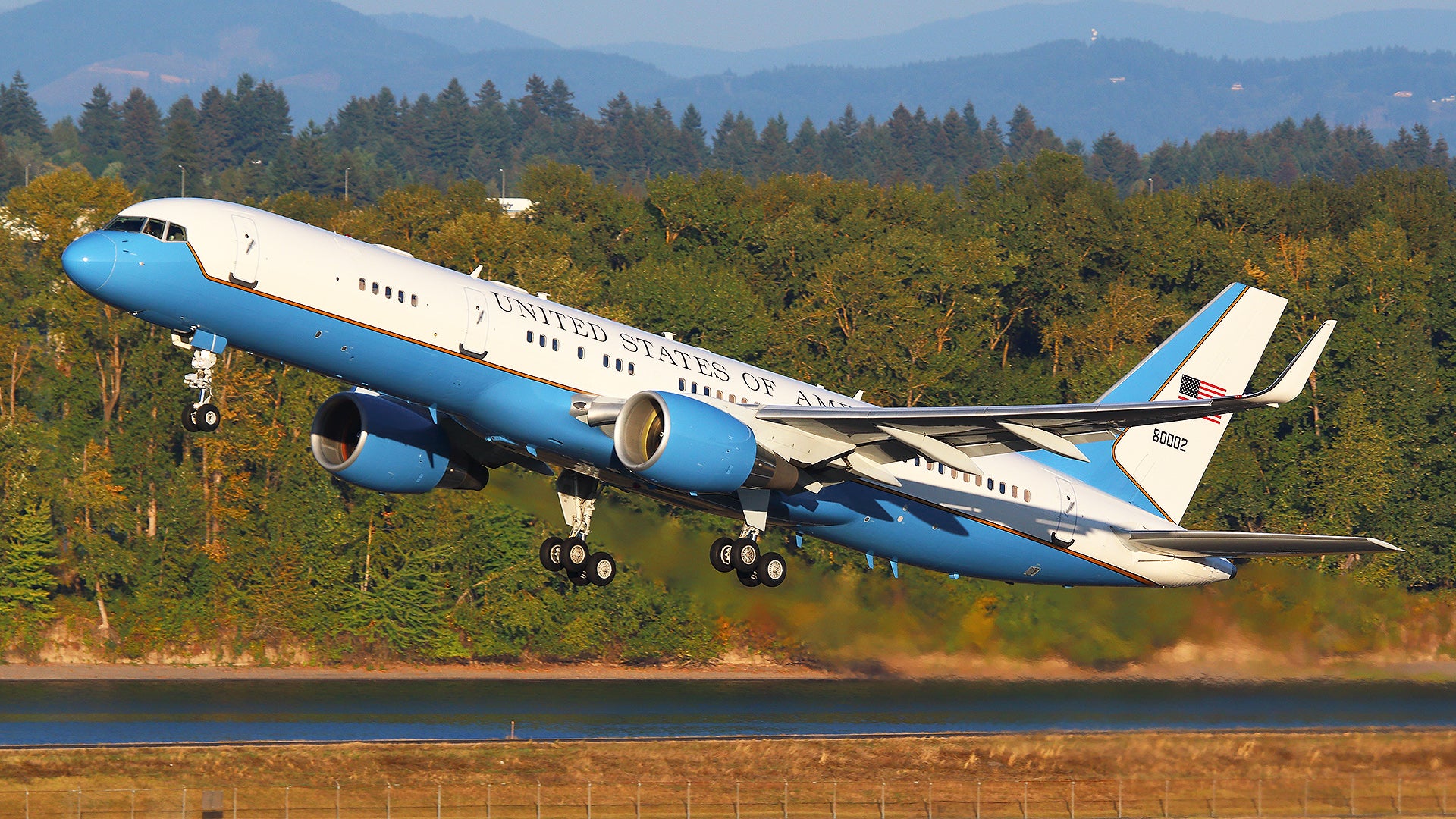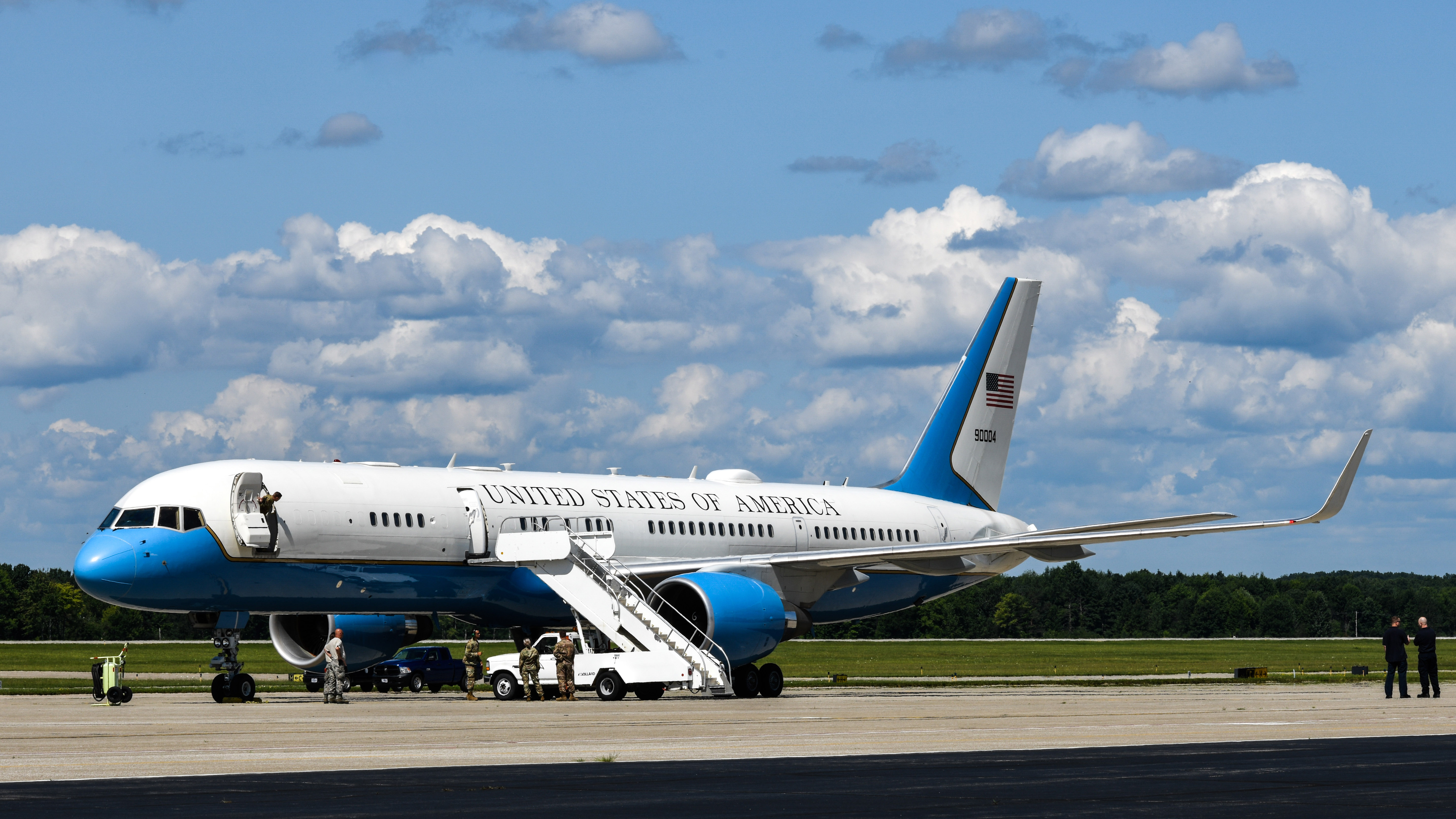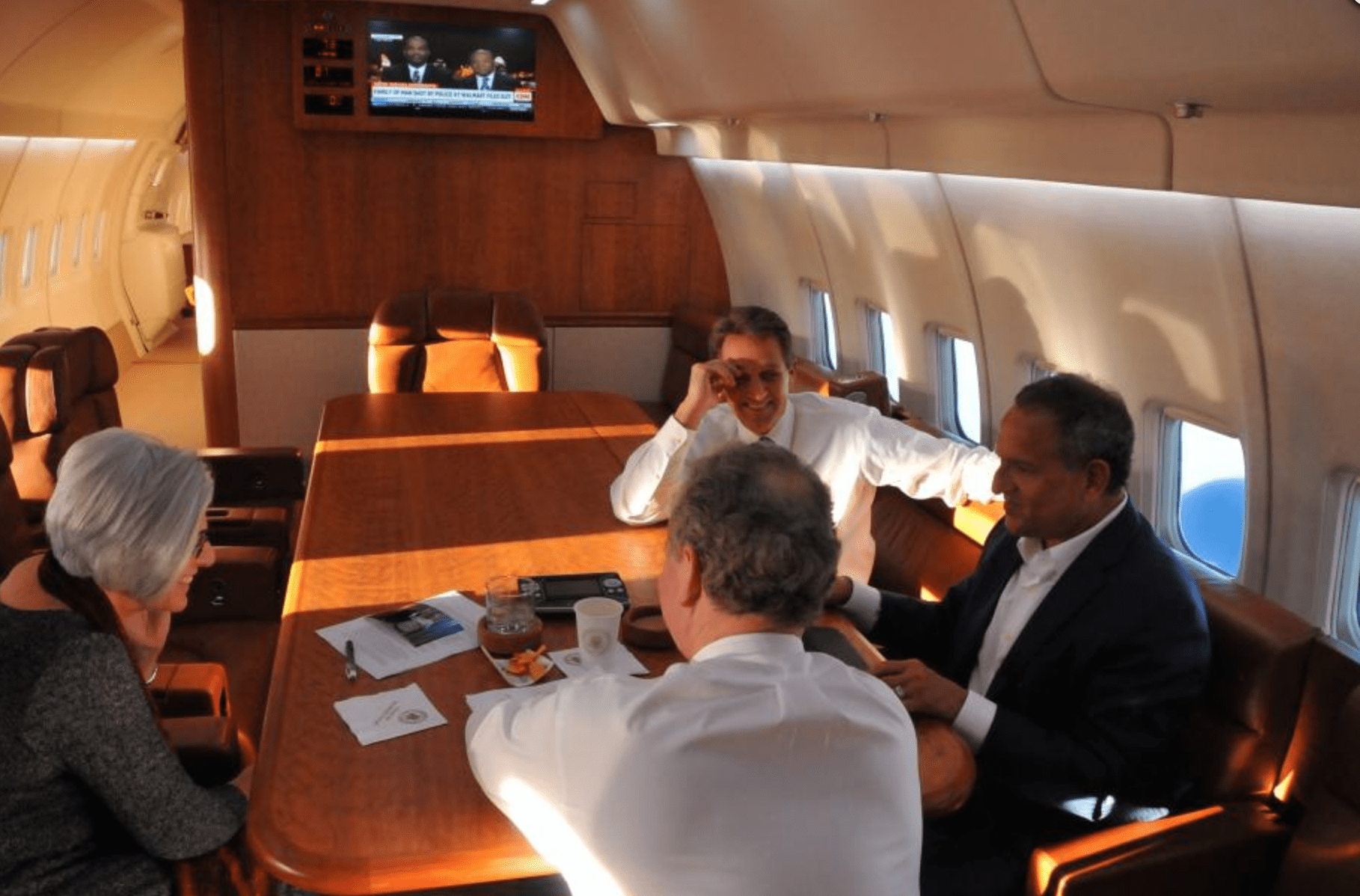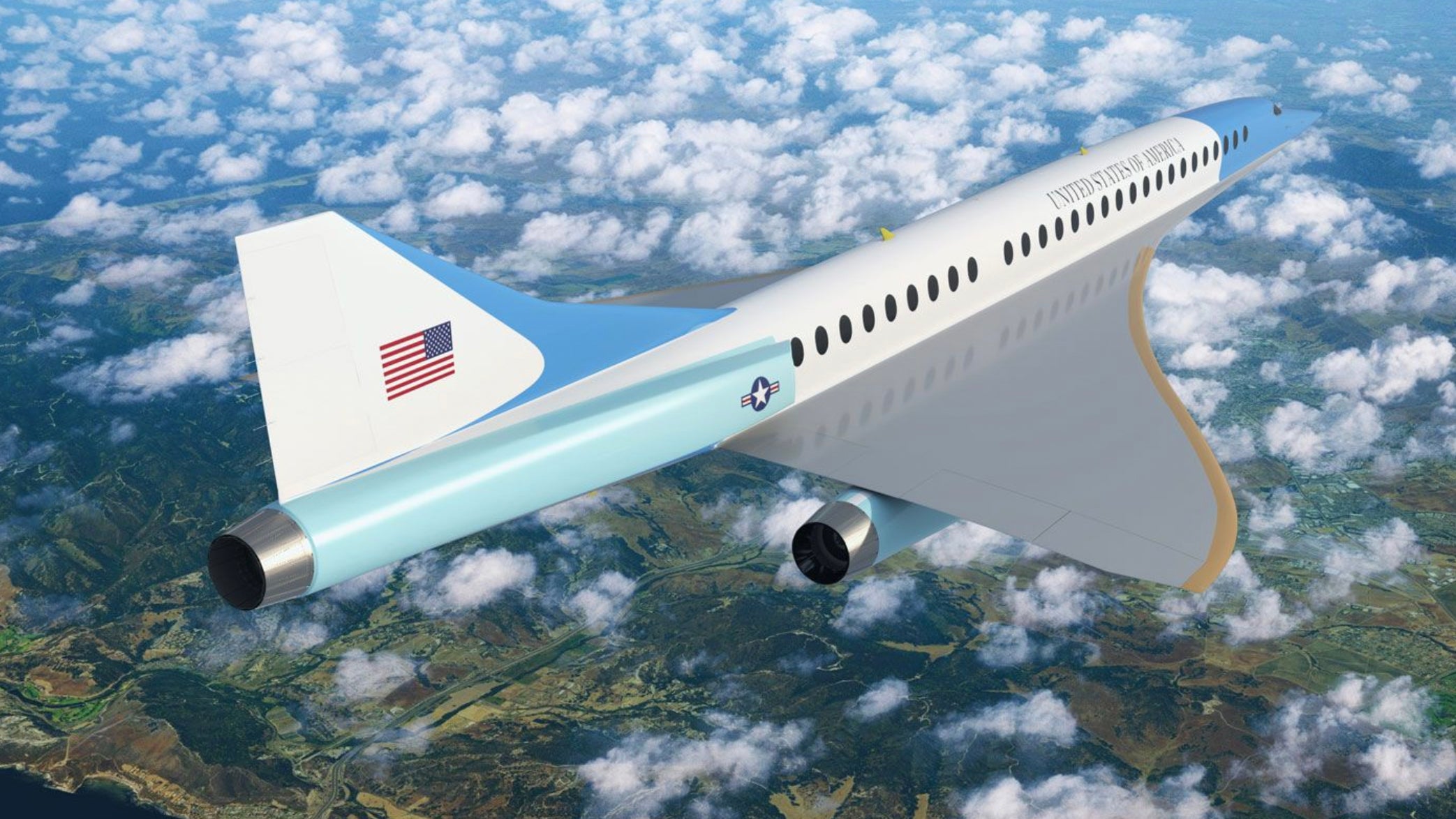The U.S. Air Force has redirected funding to work on supersonic and even hypersonic passenger aircraft that could eventually provide a very different kind of successor to its four C-32A special air mission transport aircraft, itself a commercial derivative of the out-of-production Boeing 757-200. The service is now looking to retire without direct replacement its fleet of C-32As, better known by their “Air Force Two” callsign used when the Vice President is onboard.
Since the 2003 retirement of the Anglo-French Concorde supersonic transport, the aerospace industry at large has wrestled with the conflicting demands of high-speed flight and low-cost, reliable operations, and some contenders have fallen by the wayside. Today, however, with United Airlines’ announcement that it has signed an agreement to acquire 15 examples of the Mach-1.7 Overture airliner from Boom Supersonic, it seems like the kind of technology the Air Force is looking at has inched closer to a realistic proposition.

The Air Force’s proposed Fiscal Year 2022 budget, which it released on May 28, 2021, reveals that funding for what is described as C-32 Executive Transport Recapitalization is eliminated entirely, with the last budget allocation for this effort amounting to $6.197 million in Fiscal Year 2021.
What’s particularly intriguing about the demise of the C-32A recapitalization effort is that the Air Force says it has already redirected the remaining funds from this program into separate, but related research on high-speed transport aircraft. Essentially, an exotic complement to the Air Force’s existing VIP fleet based on heavily adapted airliners and bizjets.
“After 2020, remaining funding in [C-32 Executive Transport Recapitalization] was applied to the evaluation and maturation of advanced high speed transport scale aircraft with potential to expand the defense industrial base and serve as C-32A replacements at the appropriate time,” the budget documents state.
The Air Force declaring that it’s shifted its interest from finding a potentially like-for-like replacement for the small fleet of four C-32As, to instead study high-speed executive transports is interesting, to say the least, although it was rather buried in the budget documents.
Work in this area is already underway, albeit on a fairly small scale so far. Last year, the Air Force awarded contracts to three different startups that are working in the field of high-speed executive transports. One of these was the aforementioned Boom Supersonic, which also rolled out its XB-1 “Baby Boom” supersonic demonstrator jet last October. Forthcoming trials using the XB-1 will help inform the development of the Overture supersonic airliner. Burning up to 100-percent sustainable aviation fuel and carrying 65-88 passengers, the Overture is planned to take to the air in 2026.

The other two companies are Exosonic, another aviation firm focused on supersonic aircraft development, and hypersonic aerospace startup Hermeus Corporation.
While the C-32A may not have a replacement, it’s not planned to leave Air Mobility Command service until 2040, according to the budget documents, which state that the aircraft have an average of 18 years of service remaining. The C-32As first entered service in 1998 and are operated by the 1st Airlift Squadron, 89th Airlift Wing at Joint Base Andrews, Maryland.

The C-32As are still slated for some further upgrades, with a request for $1.949 million in Fiscal Year 2022, compared with $2.947 million in Fiscal Year 2021. “This funding may include emerging modification requirements to support Program Management Administration (PMA), Advisory and Assistance Services (A&AS), systems integration lab, trainers, equipment, other government costs, and Senior Leader Communications System modernization efforts,” budget documents state.
Improvements have been ongoing for the C-32A for some time, including an “interior refresh” that brings the appearance of the C-32A’s interior closer in line with the presidential section of the VC-25A, known as “Air Force One” when the president is flying in it. A $16-million contract to upgrade the interior of just one of the jets was awarded in 2018.

Other upgrades have occurred to the C-32A fleet in recent years, including enhanced cockpit avionics, defensive systems, and greatly enhanced communications systems.
In the past, the Air Force, together with the Navy, also had much more ambitious plans to replace not only the C-32A Executive Airlift (EA) plane, but also the Air Force’s E-4B National Airborne Operations Center (NAOC) “Doomsday Plane,” and the Navy’s E-6B Airborne Command Post (ABNCP) and Take Charge and Move Out (TACAMO) aircraft, with a common airframe. The Air Force describes those platforms slated for replacement as “aging and increasingly difficult to support.”
However, this effort — which was dubbed NEAT (standing for NAOC, EA, ABNCP, and TACAMO) — was wound up in September last year “with no impact or actions for the C-32 fleet.” Since then, the Air Force has instead pushed forward with its own E-4B replacement, while the Navy has turned its sights to a variant of the C-130J for its future TACAMO platform.
So, what happens next for the Air Force’s tentative high-speed executive transport plans? While the small contracts with the three startups will get completed, it’s hard to envisage what might happen after that. It’s worth remembering, too, that the contracts involved so far are small and research-oriented, with less than $2 million going to Hermeus, for example.

Then there is the question of requirements and practicality. While a plane that can convey senior officials around the globe faster and more efficiently, as well as travel longer distances on shorter notice, would be welcome, it will likely be a singularly expensive procurement item and could also require costly bespoke support equipment. When it comes to operations, overland supersonic flight is currently still prohibited in the United States and in Europe, reducing the utility of an aircraft of this type — whether in military or commercial hands.
On the other hand, a supersonic aircraft in this class could potentially also be adapted to a range of other missions, such as intelligence, surveillance, and reconnaissance (ISR) or even strike. This is in addition to just moving even small groups of materiel and people quickly over intercontinental distances. The Air Force is already looking at ways to execute markedly faster logistics between two locales, including using rockets to deliver things very quickly to any suitable point on the globe. So, a high-speed transport, even of limited capacity would be a highly attractive proposition. We have discussed this in detail in this past piece of ours.
The budget documents don’t seem to reveal additional plans beyond this reallocation of funds, although a more concerted effort of this kind would clearly have to be funded through some other part of the budget in the future, now that the C-32A recapitalization seems to have come to an end.
In the end, far less exotic traditional airliner types may still replace the C-32As, but the Air Force could at least augment its VIP fleet with high-speed aircraft to be used where applicable. For instance, domestically, the C-32A is often used to get into and out of smaller airstrips, for instance, something that no high-speed transport will not be capable of doing.
As such, while more clarity has been provided on the future of the C-32A, and there are no plans for a direct successor for the time being, it remains to be seen whether a future “Air Force Two” might transport its high-ranking passengers at supersonic speeds, or even faster. The fact a major airline has expressed its confidence in the concept can only be good news for the Air Force when it comes to realizing its high-speed VIP transport dreams, however.
Contact the author: thomas@thedrive.com
